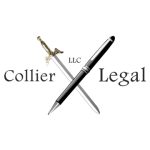Overview: The Leahy-Smith America Invents Act (AIA) & Patents

What is the Leahy-Smith America Invents Act (AIA)?
The America Invents Act is an act of law that reformed US patent law. Prior to the AIA, the US’ most recent patent law reformation was the Patent Act of 1952 (the old system).
What does the America Invents Act do?
The AIA made a handful of important changes to the US patent system:
- Transitioned from a “first to invent” system to a “first to file” system for patent applications
- Gave provisional patents value
- Added ways to challenge patents
- Increased prior user rights
AIA's First to File System
The Leahy-Smith Act changed US patent law from a “first to invent” system to a “first to file” system. Under the Patent Act of 1952, the first person to invent something was entitled to a patent. The problem was that filing dates are easy to identify, but dates of invention must be proven with evidence and legal proceedings. This led to an extremely high number of opposition proceedings and caused patent examination to be even slower than it is now.
Under a “first to file” system, there are substantially less opposition proceedings because a filing date is easily identifiable. Thus, patents are examined faster and face fewer oppositions in general.
How does this give provisional patents value?
The entire purpose of a provisional patent is to establish a priority date. Provisional patents were created in 1994, before the AIA. Prior to the AIA, a provisional patent did not establish an earlier priority date, because the priority date was based on the date of invention instead of the filing date.
Under a first to file system, a provisional application establishes a filing date that can pass along to a later-filed nonprovisional application. Thus, the AIA gave an entirely new value to provisional applications.
Changes to challenging patents
Under the Patent Act of 1954, patents could be challenged using the following methods:
- Ex Parte Reexamination
- Inter Partes Reexamination
- Patent Infringement Litigation
- Interference Proceedings
- Declaratory Judgments
These methods either started in court or could lead to court through appealing a PTAB decision. Patent litigation is slow, extremely expensive, and handled by judges that may not be well versed in patent law.
The America Invents Act added various methods to challenge patents, including Inter Partes Review (IPR), Post-Grant Review (PGR), Covered Business Method (CBM) Review, and Derivation Proceedings. These methods are administered by the USPTO utilizing judges that are experts in patent law. Furthermore, these methods are processed much faster than court proceedings.
Prior User Rights
Some businesses protect their inventions as trade secrets instead of through filed patents. Prior to the AIA, if a business was using an invention before it was patented, the business would be considered infringing unless the invention was a business method. This business method protection against infringement is a prior user right.
The Leahy-Smith Act expanded prior user rights to most patent subject matter, including technology and manufacturing. This was a huge win for manufacturing companies, which often use proprietary processes and may have patentable claims to products-by-process. Those who treat these as trade secrets and choose not to file patents will enjoy protection against infringement as long as they can establish prior use at least one year prior to the filing of the asserted patent.

About
Attorney Collier started his own law firm straight out of law school and has been practicing law in Ohio for 5+ years. During that time, Joe focused on business law and litigation, gaining some exposure to intellectual property law. While running his firm in 2021, Joe decided to go back to school and get his patent license. Since then, Attorney Collier has been focusing on protecting innovators and entrepreneurs through his expertise in intellectual property and business law.
